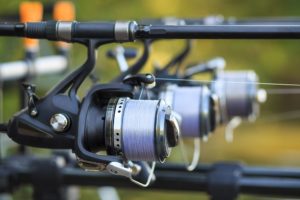 If you have a spinning rod, it’s time to get a spinning reel. As for the spinning reel, the most popular are fixed spool reels. It is best to buy a spinning reel that comes with at least one spare spool. Many surprises are waiting for you on the water, so an extra “ammo case” will undoubtedly be useful.
If you have a spinning rod, it’s time to get a spinning reel. As for the spinning reel, the most popular are fixed spool reels. It is best to buy a spinning reel that comes with at least one spare spool. Many surprises are waiting for you on the water, so an extra “ammo case” will undoubtedly be useful.
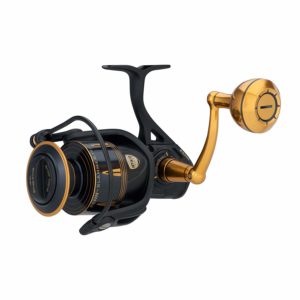
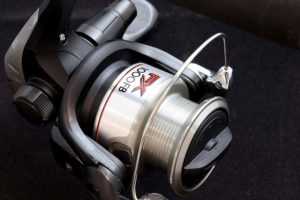
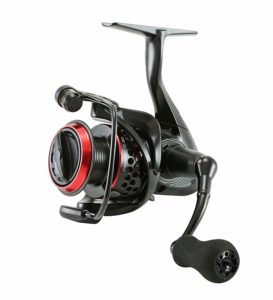
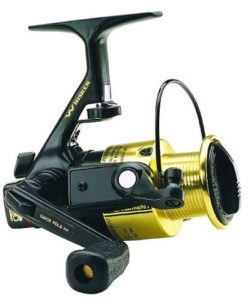
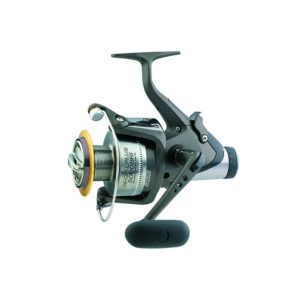
The reel should be resistant to mechanical damage and operate smoothly regardless of the weather conditions. A good reel is often made for a specific type of rod. The life cycle of the reel depends on how often and in what manner it is used. Saving money when purchasing the reel may bite you in the back after some time. On the other hand, throwing money away to get a professional grade reel isn’t a good option either.
Spinning means challenging working conditions for the reel mechanisms. Mud, sand, water, large lures — all those destroy the reel fast. The cheaper the materials it is made of, the faster.
That is why I made this list of 5 best spinning reels that aren’t needlessly expensive or poor quality. If you don’t like any of those 5 reels, you can find the best reel for you after checking out my Buyer’s guide.
Top 5 Best Spinning Reel Picks in 2019
1PENN Slammer III Spinning — For Massive Fish
Penn Slammer III is a reel that will serve well anyone who intends to fish. It is even equipped for the possibility of a massive fish biting the hook by combining a drive mechanism with a screw pin. It is worth mentioning that the entire reel housing is made of metal and is extremely hard to damage.
The brake clutch has a very high braking power and lacks deadlocks. It is especially handy when you are starting to pull the fish. That makes working with the reel very smooth. The rotor vibrations are compensated with the help of a unique balance system.
The reel has bearings that improve its operation.
- Design
- Convenience
- Smoothness
- Capacity
- Advanced drag system
- Weight
2Shimano Fx Spin Reel — Best for Medium Fish
This is a reel that distinguishes the fact that it has a 13 pounds max drag. There are not many lightweight reels designed for such heavy load. Thanks to ball bearings, fishing with this reel is very smooth, and the reel itself does not get tangled at all. Besides, it has an exceptional line-winding system, so winding is fast and precise.
The well-adjusted brake allows catching even a huge fish. It is not complicated even for novice anglers.
The reel handle can easily be winded without effort, but it’s not very comfortable. You do not have to worry about the reel when you carry the rod, you won’t damage it.
While the protection is nothing really major, it’s nice it’s present at all.
- Operation. The real is very smooth
- Line capacity
- Dyna-balance
- Handle
3Okuma Ceymar — Best Bang for the Buck
You probably want to buy a good and cheap spinning reel, but many people are afraid that their chosen reel won’t be robust enough. If you’re going to equip yourself with a piece of time-tested equipment at a low price, I encourage you to consider choosing the Okuma Ceymar reel.
This reel has been equipped with a ball bearing made of stainless steel. The product’s design is durable and stable. The reel utilizes an anti-reverse roller bearing. You do not have to worry about devoting your time to unraveling the line. The rod is light.
All in all, the system works efficiently.
- Brakes
- Weight
- 7 bearings
- Beautiful, but not as smooth as some other reels by Okuma, although definitely more efficient
4Daiwa SS700 — High Efficiency
It is one of the most efficient devices of this type. The whole mechanism is very well hidden in the middle of the casing and equally well-greased, which is aesthetically pleasing. Therefore, there is no chance that the interior of the mechanism will be damaged by outside forces. The reel weighs about 7oz.
With the help of this reel, you can cast the bait quite far, so you will have a better chance of catching something. The crank is specially made in such a way that winding the line it is not problematic and does not cause hand pain.
- The reel looks very good and fits most rods
- Anti-reverse mechanism.
- Speed
- After some time the brake stops being precise
5Daiwa Regal Bite — Beginner Friendly
Daiwa Regal Bite is a spinning reel with a pretty heavy reel. The spool is CAD-designed, so you can be sure that it is exact. The reel is designed to ensure smooth operation. It is made for experienced and beginner anglers.
The brake is precise. With its help, you can catch and pull fish without much effort. The spool is made of durable composite.
Assembling the reel does not cause any significant problems, and the reel looks very good on any rod. It is very fast..
- Weight
- Smoothness
- Size
Buyer’s Guide
Bearings
It is vital that the spinning reel has a thrust bearing. If that is the case, the reel spool will not move backward, which is beautiful and convenient when fishing.
Operation
Another thing you have to pay attention to is its operation. If it is smooth and noiseless, it’s the right choice.
Mounting
The next thing is how easy it is to adjust the reel to the fishing rod. They should match.
For a lightweight spinning rod, it is best to use a small reel, which will not disturb the rod’s balance. You need to use a larger reel with a deeper and larger spool for a more massive rod.
Brakes
You can only succeed in catching a large predator when the reel is equipped with a strong enough brake. The reel brake is a contraption that helps to prevent the fish from breaking off. At the moment when the fish does not give up and fights hard, the reel slowly releases the line.
There are two types of fishing reel based on brakes. You can get a reel with a front brake or with a rear brake.
Reels with front and rear brakes differ in construction. The former type has a blocking mechanism located at the front and blocks the reel directly. Reels with a rear brake slow down the transmission mechanism. Which structure is better? Opinions are divided.
One one hand, front brake reels have high precision and are easy to adjust.
On the other hand, rear brakes are more sophisticated. When it comes to the location of the brake, it is always individual. Some people prefer reels with a front brake, while others prefer rear brakes. I think that the position of the brake doesn’t really matter.
The most important thing for a break is precision. When spinning with fragile rods, a precise brake is a prerequisite for success. Any uneven blocking, the impossibility of tuning the brake precisely make the reel suboptimal. The brake must be released immediately after the load exceeds the settings, and it must work evenly.
Spool
A spool is an inalienable part of a fishing reel. Or is it? You can actually choose between reels with replaceable and built-in reels. The former reels are more expensive, but they also allow replacing the line fast.
Parameters
Some reels are complicated devices. That is why they have a few key parameters. Let’s study them in more detail.
Gear ratio
If you’re familiar with mechanisms, you already know what I’m going to tell you. This parameter tells you how fast the spool will revolve. It specifies the number of revolutions the spool does after one revolution of the crank. Generally, the faster, the better, although some people prefer slower reels: mostly for fishing massive fish.
Line Capacity
The line capacity of a fishing reel is an essential parameter. Basically, it’s how much line you can fit on the spool.
Weight
Straightforward, but still significant. When spinning, you have to wield the fishing rod and reel. The more you equipment weighs, the harder for you using it will be. After a few hours of spinning, your hands can grow numb. Therefore, it is worth choosing a light reel that weighs as little as possible.
Questions and Answers
The definition of spinning is casting and drawing back an artificial bait to lure and catch a predatory fish. But such an interpretation isn’t helpful at all. First of all, you can even catch peaceful fish using spinning, it’s just requires a peculiar technique, as does any species of fish.
There is no single instruction on how to spinning to catch a fish. Some anglers learn this technique over the years.
First of all, you need to see what’s going on in the water. It can take a while to learn always to find the right position to be able to do that, but it’s worth it. The more shallow the water is, the fewer secrets it holds.
Second, when learning how to use the spinning technique, you need to learn the habits of the fish. A river or a lake is not a small bathtub where the fish are everywhere. Each fish has its preferable habitat and habits. Many spinning methods depend on the species and the environment. It is hard to cover them all in a single review. But I can tell you this: each of them requires using a spinning rod and numerous baits. But before you get to know all the methods and the secrets of spinning fishing, it’s worth learning a few basic tricks to help you operate the spinning rod effectively.
Suffices to say, there are three basic types of bait casting. From the hand, over the head and from aside. One of the most essential rules of every casting technique is only to use your arm, not your whole body. You also need to hold the rod properly and release the brake.
Casting the bait over the head works best with slow-action rods and lighter lures. You also need free space behind your back and over your head. Otherwise, it is easy to get the hook tangled in an obstacle. When casting, look towards the chosen target.
Side casting is similar in that you need to check what’s on your right or left, and you keep the rod horizontally.
When casting from hand, you don’t need to check your surroundings, as you only need free space in front of you.
Beginner anglers often do not know how to strike the fish, or when for that matter. Sometimes they do it too lightly, sometimes, too hard. A light strike will not get the fish hooked, a strike that is too strong will tear the mouth of the fish, releasing it. You can only learn how to do that in practice. You have to feel it and make a few errors.
Still, there are some mistakes that you can avoid. The most common one is jerking the rod with your whole body, which is a slow and unpredictable move. The rod must be jerked fasts, with your wrist and shoulder only. Some anglers relax their arm soon after, loosening the line completely to make it stick.
Pulling the fish is the most exciting moment when you’re fishing. However, all species behave differently. Some are quite brave if nothing else. For example, if you drag such a fish too hard, it’s going to fight.
After striking the fish, you should immediately show it who is in charge here. Keep the line strained, do not allow it loosen.
